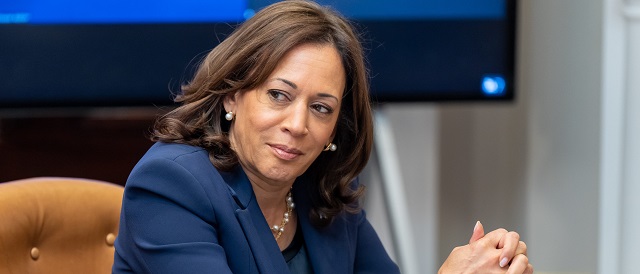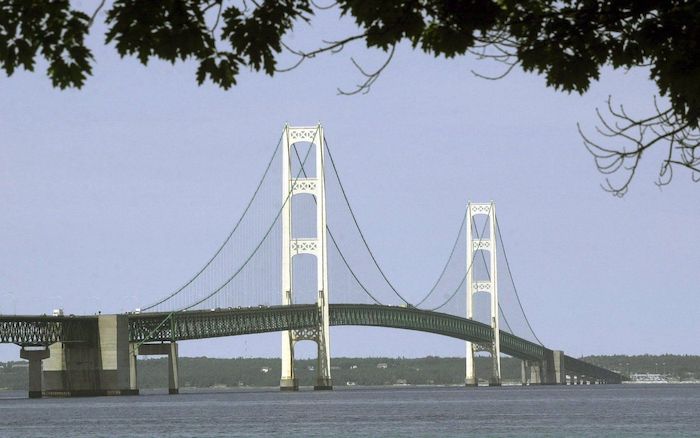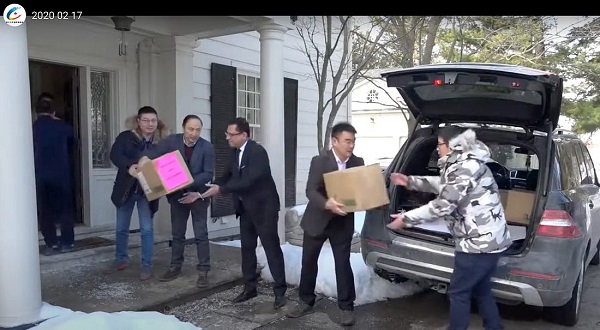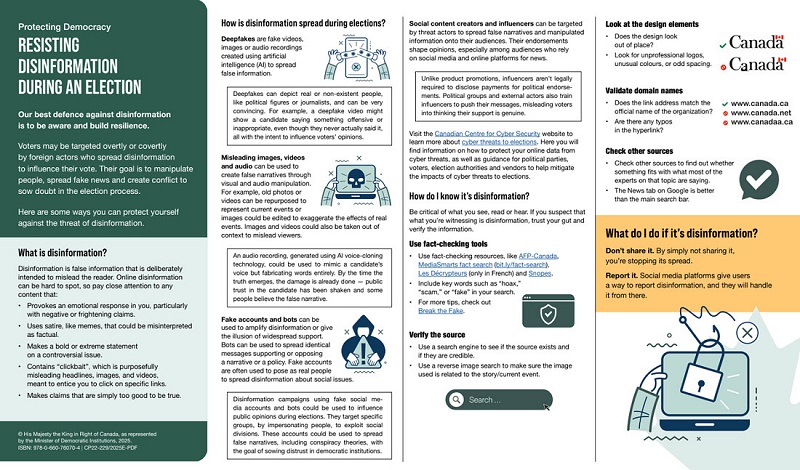Daily Caller
Harris Took The Reins On Solving A Key Region’s Migrant Crisis — Nearly 1.8 Million People Crossed Into US Anyway

 From the Daily Caller News Foundation
From the Daily Caller News Foundation
Over a million migrants hailing from Central America have crossed illegally into the U.S. since Vice President Kamala Harris was tapped to address the illegal immigration crisis stemming from that region.
Since the launch of her presidential campaign, Harris and her allies have vehemently pushed back on the narrative that she was appointed to serve as “border czar” for the White House, arguing that she was only given a limited role addressing the “root causes” of illegal migration stemming from Central America. However, roughly 1.7 million people from the Northern Triangle region, which includes El Salvador, Guatemala and Honduras, flooded into the U.S. after she was tasked with mitigating the crisis.
“It’s total chaos on the border, and has been for the last three and a half years,” retired Border Patrol Chief Rodney Scott said about the current border situation to the Daily Caller News Foundation. “America is put at risk for no good reason and they’re being sold a bill of goods that’s just not true.”
Border Patrol agents deployed along the southern border encountered a total of 1,739,795 migrants from El Salvador, Guatemala and Honduras attempting to cross illegally into the country between April 2021 — Harris’ first full month serving as “border czar” — and June 2024, according to a review of the latest available data by Customs and Border Protection (CBP).
“I’ve asked her, the VP, today — because she’s the most qualified person to do it — to lead our efforts with Mexico and the Northern Triangle and the countries that help — are going to need help in stemming the movement of so many folks, stemming the migration to our southern border,” Biden publicly declared on March 24, 2021.
The president added that there was nobody “better qualified” to handle the task and said she wouldn’t have to check in with him because she “knows what she’s doing.”
“But — so, Madam Vice President, thank you. I gave you a tough job, and you’re smiling, but there’s no one better capable of trying to organize this for us,” Biden continued.
Since that speech was given, 253,027 illegal migrants from El Salvador, 798,678 illegal migrants from Guatemala and 688,090 illegal migrants from Honduras have descended on the U.S.-Mexico border — totaling the more than 1.7 million encounters, according to CBP data. The numbers under Harris’ “border czar” tenure surpass the roughly 1,098,000 Border Patrol apprehensions of these three nationalities seen under the Trump administration from fiscal year 2017 to fiscal year 2020, according to past CBP data.
What further exacerbated the immigration crisis under the Biden-Harris administration was the influx of other foreign nationals who have used Central America as a way station en route to the U.S. border — most notably Venezuelans. While non-Central Americans did not technically fall under the vice president’s purview, the lack of border enforcement in the region has skyrocketed the U.S. asylum crisis.
Less than 50,000 Venezuelan nationals were encountered by Border Patrol agents in fiscal year 2021, according to CBP data. That number blew up to more than 187,000 in fiscal year 2022 and peaked at more than 200,600 in fiscal year 2023.
Venezuelans are far from the only ones crossing the Central American region in their journey to illegally enter the U.S. More than half a million U.S.-bound migrants crossed the Darien Gap — a dense jungle that spans across the border of Panama and Colombia — in 2023 alone, according to the Council on Foreign Relations
Illegal border crossings from other nationalities have also exploded under Harris’ “border czar” tenure.
There were less than 2,000 encounters with Chinese nationals at the southern border in fiscal year 2022, according to CBP Data. That figure exploded to over 24,000 in fiscal year 2023 and has already surpassed 33,000 this fiscal year, despite the year not yet over.
Similar spikes in illegal southern border crossings took place under the Biden-Harris administration by Indians, Turks, Nicaraguans, Russians and other nationalities.
Republicans have long hammered Harris for allegedly not taking the border crisis seriously, and recently released surveys indicate that most Americans believe her to be supportive of “open borders.”
For her part, Harris did visit Central America in June 2021 and warned would-be illegal migrants: “Do not come. Do not come.” She also visited the U.S.-Mexico border once in June 2021 after facing mounting pressure to do so.
Since Biden dropped out of the 2024 presidential contest and Harris became the presumptive Democratic presidential nominee, she has attempted to cast herself as a tough-on-crime prosecutor who would govern with border hawk tendencies. Her campaign has released two different advertisements claiming she would “fix” the border crisis and hire more Border Patrol agents.
Harris previously supported decriminalizing illegal border crossings, but the latest statements from her campaign suggest she has completely flipped on the position. It’s also not immediately clear if her running mate, Minnesota Gov. Tim Walz, remains a supporter of sanctuary city policies.
“The truth is, Vice President Kamala Harris has always been for open borders. She can’t run from that,” said Joey Chester, communications manager for the Federation for American Immigration Reform, in a statement to the DCNF.
Chester listed Harris’ past opposition for a border wall, rejection of more funding for Border Patrol agents and detention beds and past support for DACA beneficiaries to be compensated as congressional employees as reasons to be suspect of her current pivot to the right on border enforcement.
“These policies have proven disastrous and are deeply unpopular with the American people,” he added. “Words can’t change the fact that the current state of America’s borders, and the influx of illegal aliens in the United States today, is the doing of President Biden and Vice President Harris.”
The Harris campaign did not respond to a request for comment from the DCNF.
(Featured Image Media Credit: Flickr/Official White House Photo by Adam Schultz)
Business
Ted Cruz, Jim Jordan Ramp Up Pressure On Google Parent Company To Deal With ‘Censorship’

From the Daily Caller News Foundation
By Andi Shae Napier
Republican Texas Sen. Ted Cruz and Republican Ohio Rep. Jim Jordan are turning their attention to Google over concerns that the tech giant is censoring users and infringing on Americans’ free speech rights.
Google’s parent company Alphabet, which also owns YouTube, appears to be the GOP’s next Big Tech target. Lawmakers seem to be turning their attention to Alphabet after Mark Zuckerberg’s Meta ended its controversial fact-checking program in favor of a Community Notes system similar to the one used by Elon Musk’s X.
Cruz recently informed reporters of his and fellow senators’ plans to protect free speech.
Dear Readers:
As a nonprofit, we are dependent on the generosity of our readers.
Please consider making a small donation of any amount here. Thank you!
“Stopping online censorship is a major priority for the Commerce Committee,” Cruz said, as reported by Politico. “And we are going to utilize every point of leverage we have to protect free speech online.”
Following his meeting with Alphabet CEO Sundar Pichai last month, Cruz told the outlet, “Big Tech censorship was the single most important topic.”
Jordan, Chairman of the House Judiciary Committee, sent subpoenas to Alphabet and other tech giants such as Rumble, TikTok and Apple in February regarding “compliance with foreign censorship laws, regulations, judicial orders, or other government-initiated efforts” with the intent to discover how foreign governments, or the Biden administration, have limited Americans’ access to free speech.
“Throughout the previous Congress, the Committee expressed concern over YouTube’s censorship of conservatives and political speech,” Jordan wrote in a letter to Pichai in March. “To develop effective legislation, such as the possible enactment of new statutory limits on the executive branch’s ability to work with Big Tech to restrict the circulation of content and deplatform users, the Committee must first understand how and to what extent the executive branch coerced and colluded with companies and other intermediaries to censor speech.”
Jordan subpoenaed tech CEOs in 2023 as well, including Satya Nadella of Microsoft, Tim Cook of Apple and Pichai, among others.
Despite the recent action against the tech giant, the battle stretches back to President Donald Trump’s first administration. Cruz began his investigation of Google in 2019 when he questioned Karan Bhatia, the company’s Vice President for Government Affairs & Public Policy at the time, in a Senate Judiciary Committee hearing. Cruz brought forth a presentation suggesting tech companies, including Google, were straying from free speech and leaning towards censorship.
Even during Congress’ recess, pressure on Google continues to mount as a federal court ruled Thursday that Google’s ad-tech unit violates U.S. antitrust laws and creates an illegal monopoly. This marks the second antitrust ruling against the tech giant as a different court ruled in 2024 that Google abused its dominance of the online search market.
Daily Caller
Daily Caller EXCLUSIVE: Trump’s Broad Ban On Risky Gain-Of-Function Research Nears Completion


From the Daily Caller News Foundation
By Emily Kopp
President Donald Trump could sign a sweeping executive order banning gain-of-function research — research that makes viruses more dangerous in the lab — as soon as May 6, according to a source who has worked with the National Security Council on the issue.
The executive order will take a broad strokes approach, banning research amplifying the infectivity or pathogenicity of any virulent and replicable pathogen, according to the source, who requested anonymity to speak candidly about the anticipated executive action. But significant unresolved issues remain, according to the source, including whether violators will be subject to criminal penalties as bioweaponeers.
The executive order is being steered by Gerald Parker, head of the White House Office of Pandemic Preparedness and Response Policy, which has been incorporated into the NSC. Parker did not respond to requests for comment.
Dear Readers:
As a nonprofit, we are dependent on the generosity of our readers.
Please consider making a small donation of any amount here. Thank you!
In the process of drafting the executive order, Parker has frozen out the federal agencies that have for years championed gain-of-function research and staved off regulation — chiefly Anthony Fauci’s former institute, the National Institute of Allergy and Infectious Diseases at the National Institutes of Health.
The latest policy guidance on gain-of-function research, unveiled under the Biden administration in 2024, was previously expected to go into effect May 6. According to a March 25 letter cosigned by the American Society for Microbiology, the Association for Biosafety and Biosecurity International, and Council on Governmental Relations, organizations that conduct pathogen research have not received direction from the NIH on that guidance — suggesting the executive order would supersede the May 6 deadline.
The 2024 guidance altered the scope of experiments subject to more rigorous review, but charged researchers, universities and funding agencies like NIH with its implementation, which critics say disincentivizes reporting. Many scientists say that researchers and NIH should not be the primary entities conducting cost–benefit analyses of pandemic virus studies.
Parker previously served as the head of the National Science Advisory Board for Biosecurity (NSABB), a group of outside experts that advises NIH on biosecurity matters, and in that role recommended that Congress stand up a new government agency to advise on gain-of-function research. Former Centers for Disease Control and Prevention Director Robert Redfield has also endorsed moving gain-of-function research decision making out of the NIH to an independent commission.
“Given the well documented lapses in the NIH review process, policymakers should … remove final approval of any gain-of function research grants from NIH,” Redfield said in a February op-ed.
It remains to be seen whether the executive order will articulate carveouts for gain-of-function research without risks of harm such as research on non-replicative pseudoviruses, which can be used to study viral evolution without generating pandemic viruses.
It also remains to be seen whether the executive order will define “gain-of-function research” tightly enough to stand up to legal scrutiny should a violator be charged with a crime.
Risky research on coronaviruses funded by the NIH at the Wuhan Institute of Virology through the U.S. nonprofit EcoHealth Alliance typifies the loopholes in NIH’s existing regulatory framework, some biosecurity experts say.
Documents obtained through the Freedom of Information Act in 2023 indicated that EcoHealth Alliance President Peter Daszak submitted a proposal to the Pentagon in 2018 called “DEFUSE” describing gain-of-function experiments on viruses similar to SARS-CoV-2 but downplayed to his intended funder the fact that many of the tests would occur in Wuhan, China.
Daszak and EcoHealth were both debarred from federal funding in January 2025 but have faced no criminal charges.
“I don’t know that criminal penalties are necessary. But we do need more sticks in biosafety as well as carrots,” said a biosecurity expert who requested anonymity to avoid retribution from his employer for weighing in on the expected policy. “For instance, biosafety should be a part of tenure review and whether you get funding for future work.”
Some experts say that it is likely that the COVID-19 crisis was a lab-generated pandemic, and that without major policy changes it might not be the last one.
“Gain-of-function research on potential pandemic pathogens caused the COVID-19 pandemic, killing 20 million and costing $25 trillion,” said Richard Ebright, a Rutgers University microbiologist and longtime critic of high-risk virology, to the Daily Caller News Foundation. “If not stopped, gain-of-function research on potential pandemic pathogens likely will cause future lab-generated pandemics.”
-

 Daily Caller1 day ago
Daily Caller1 day agoTrump Executive Orders ensure ‘Beautiful Clean’ Affordable Coal will continue to bolster US energy grid
-

 2025 Federal Election1 day ago
2025 Federal Election1 day agoBREAKING from THE BUREAU: Pro-Beijing Group That Pushed Erin O’Toole’s Exit Warns Chinese Canadians to “Vote Carefully”
-

 Business1 day ago
Business1 day agoChina, Mexico, Canada Flagged in $1.4 Billion Fentanyl Trade by U.S. Financial Watchdog
-

 COVID-191 day ago
COVID-191 day agoTamara Lich and Chris Barber trial update: The Longest Mischief Trial of All Time continues..
-

 2025 Federal Election2 days ago
2025 Federal Election2 days agoTucker Carlson Interviews Maxime Bernier: Trump’s Tariffs, Mass Immigration, and the Oncoming Canadian Revolution
-

 2025 Federal Election1 day ago
2025 Federal Election1 day agoAllegations of ethical misconduct by the Prime Minister and Government of Canada during the current federal election campaign
-

 Energy1 day ago
Energy1 day agoStraits of Mackinac Tunnel for Line 5 Pipeline to get “accelerated review”: US Army Corps of Engineers
-

 Business2 days ago
Business2 days agoDOGE Is Ending The ‘Eternal Life’ Of Government






